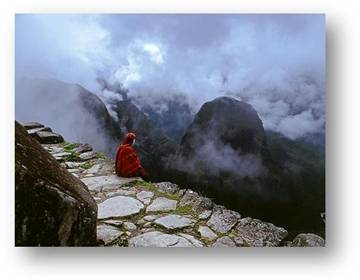Cusco altitude is about 3.399 m, for that reason is considered as one of the highest cities in the world. Located in the southeastern of Peru, includes areas of the Andes and high jungle.
The city of Cuzco is located more than 3000 meters over the sea level. Altitude sickness or also known as Soroche can cause headaches and discomfort to tourists who are just arriving in the city of Cuzco and who are not familiar with the altitude in Cuzco. Note that on a trip to Cuzco and Machu Picchu tourists stay at different altitudes. The altitude in Cusco and nearby places varies according to the people, where you are, and usually between a valley and a mountain top nearby you can find different levels of height to which should be familiar to avoid altitude sickness, or at least try to minimize it.
• The altitude of Cuzco is 3400 meters above sea level..
• The altitude at Machu Picchu is 2800 meters. On the sea level.
• If traveling to Pisac is at 2950 meters.
When the visitors decide to Travel to Cusco will notice that when they arrive to the airport by plane or after a long bus trip. Inevitably will feel the strange sensation of the high altitude and its effects known as “soroche”. The human body needs to adapt gradually to new conditions in height. This occurs due to the lower atmospheric pressure and lower density of oxygen in the air, forcing the heart and lungs to work harder than usual.
Symptoms of Altitude Sickness
• Headache (headache).
• Nausea and vomiting.
• Anorexia (poor appetite).
• Physical exhaustion.
Sleep disorders. They can be either drowsiness or insomnia. Also there may be episodes of nocturnal sudden dyspnea (waking abruptly with shortness of breath) due to the so-called Cheyne-Stokes breathing during sleep.
The most serious manifestations (and potentially fatal) of acute mountain sickness are the Altitude Pulmonary Edema and high altitude cerebral edema
It is important to note that, despite scrupulously following a schedule of acclimatization, altitude sickness can occur at any time, especially when you Travel to Arequipa, puno and of course Cusco or any other city in the area of the highlands of Peru.
We suggest the following:
A. – Arriving by plane to offshore areas: You should avoid heavy meals and / or heavy, soft drinks, Coca Cola, coffee, cigarettes. Otherwise you should be taken daily for 2 to 3 liters of natural water and herbal mates to maintain adequate hydration.
2. – You must maintain a high energy light diet and high carbohydrate, no fat, in small amounts several times a day. Avoid foods rare which the body is not accustomed.
3. – After the arrival must rest and sleep all you can.
4. – It is recommended to take a hot coca tea and very concentrated with a few drops of lemon, if available candies or toffees coca leaf would also be advisable to eat them.
5. – Always take a cup of hot lemon matte, after meals and at night it is advisable to be a chamomile tea or anise.
6. – Coca tea and sweets, toffees, biscuits and chocolates made with coca leaves are very useful during the day, avoid eating them before bedtime.
7. In case you need something stronger, like some pills, call a doctor in order to get some medical prescription.
Arriving in Cusco by air
it is very important to go slowly and do not do heavy physical exertion, remember you are at 3.400 m, rest a few hours after landing. If you feel lack oxygen, can apply at the airport.
